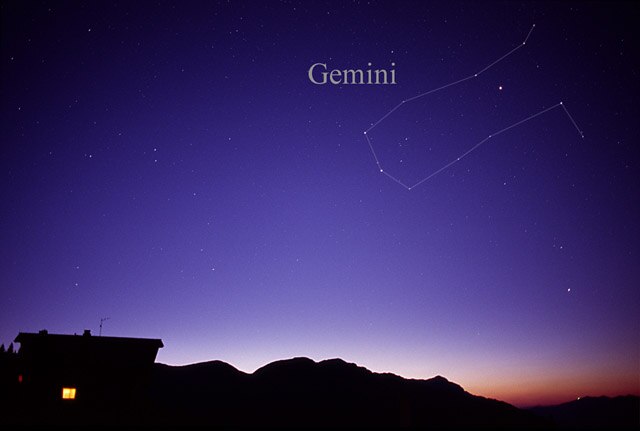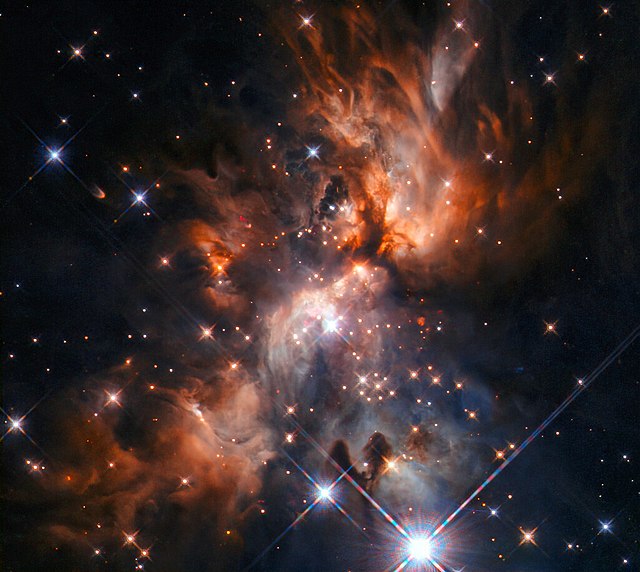NGC 2266 is an open cluster of stars in the constellation of Gemini. It was discovered by German-British astronomer William Herschel on 7 December 1785. This is a relatively dim cluster with an integrated visual magnitude of 9.5 and an angular size of 5.0′. The stellar members can be readily resolved with an amateur telescope. NGC 2266 is located at a distance of 10,603 ly (3,251.0 pc) from the Sun. It is located close to the opposite part of the sky from the Galactic Center, or the anti-center.
SDSS (Sloan Digital Sky Survey) image
Gemini is one of the constellations of the zodiac and is located in the northern celestial hemisphere. It was one of the 48 constellations described by the 2nd century AD astronomer Ptolemy, and it remains one of the 88 modern constellations today. Its name is Latin for twins, and it is associated with the twins Castor and Pollux in Greek mythology. Its old astronomical symbol is (♊︎).
The constellation Gemini as it can be seen with the unaided eye, with added connecting lines.
AFGL 5180 - Through the Clouds.
Gemini as depicted in Urania's Mirror, a set of constellation cards published in London c.1825.
Sculpture showing Castor and Pollux, the legend behind the third astrological sign in the Zodiac and the constellation of Gemini





